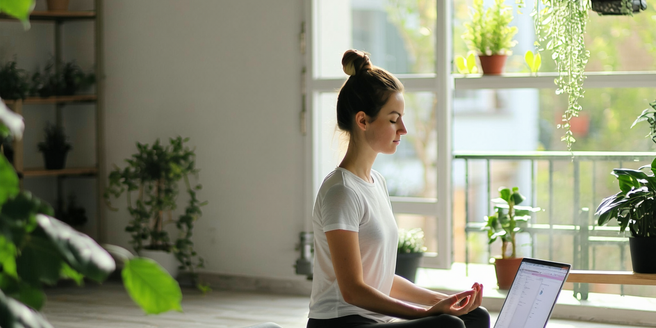
Understanding Mindfulness and Its Impact on Productivity
Mindfulness is a mental state achieved by focusing on the present moment while calmly acknowledging and accepting one’s feelings, thoughts, and bodily sensations. This practice can significantly enhance productivity by reducing stress, increasing attention span, and improving emotional regulation. As individuals become more aware of their mental processes, they can better manage distractions and improve concentration. This leads to more efficient task management and a higher quality of work. Numerous studies have demonstrated that regular mindfulness practice can decrease mental fatigue, boost creativity, and foster a positive work environment. By systematically incorporating mindfulness into daily routines, individuals and organizations can harness these benefits to improve overall productivity. Moreover, the clarity and calmness achieved through mindfulness extend beyond work, contributing to a balanced and fulfilling life.
Breathing Techniques to Boost Focus and Clarity
Implementing specific breathing techniques can be an effective way to enhance focus and clarity, particularly during demanding work situations. Deep breathing helps activate the body’s natural relaxation response, reducing stress and promoting mental clarity. Techniques such as diaphragmatic breathing and the 4-7-8 method can increase oxygen flow to the brain, heightening alertness and concentration. Regular practice of these breathing exercises throughout the workday can help to clear mental fog, improve cognitive function, and stabilize emotions. During tight deadlines or complex projects, deliberate breathing can act as a tool to reset one’s mind, allowing for more thoughtful and productive work. Integrating these techniques into daily routines provides a practical path to maintaining mental agility and boosting overall productivity.
Incorporating Mindful Breaks into Your Workday
Mindful breaks are short, intentional pauses in the workday designed to refresh the mind and body. These breaks allow employees to step away from stressful or monotonous tasks, reducing burnout and enhancing overall productivity. By pausing to engage in activities such as stretching, walking, or short meditation sessions, individuals can reset their focus and reduce tension. These activities can be as brief as a five-minute walk outside or a meditation session at one’s desk. The key is to fully engage in the activity, leaving work stresses behind momentarily. Regularly scheduled mindful breaks can energize the work environment, leading to increased creativity and efficiency. By balancing focused work with mindful rest, employees often find they can tackle tasks more innovatively and with renewed enthusiasm.
The Role of Meditation in Enhancing Efficiency
Meditation plays a vital role in enhancing efficiency both in personal and professional contexts. Regular meditation practice provides a foundation for increased mental clarity, emotional stability, and improved stress management. By dedicating just a few minutes each day to meditation, individuals can enhance their capacity to concentrate and process information more effectively. This leads to quicker decision-making and problem-solving, as the mind becomes adept at filtering out irrelevant distractions. Furthermore, meditation fosters resilience against stress, allowing individuals to maintain focus during challenging work situations. This efficiency is not merely about speed; it’s about improving the quality of work produced. Through meditation, individuals can achieve a state of mind conducive to sustained productivity and personal well-being.
Creating a Mindful Workspace for Maximum Output
Designing a mindful workspace is an essential step toward promoting productivity. A workspace that embodies mindfulness encourages focus, creativity, and calmness. Begin by decluttering your space to remove unnecessary distractions and create an environment that fosters clear thinking. Incorporate elements such as natural light, plants, or soothing colors that contribute to a peaceful atmosphere. Additionally, personalize the area with items that inspire and motivate, while ensuring ergonomics are considered to promote physical well-being. Keeping the workspace organized and thoughtfully arranged can also reduce stress and time wasted looking for items. By regularly reassessing the workspace setup, individuals can adapt to their evolving needs, optimizing for maximum output and maintaining a harmonious balance between work and mindfulness.
